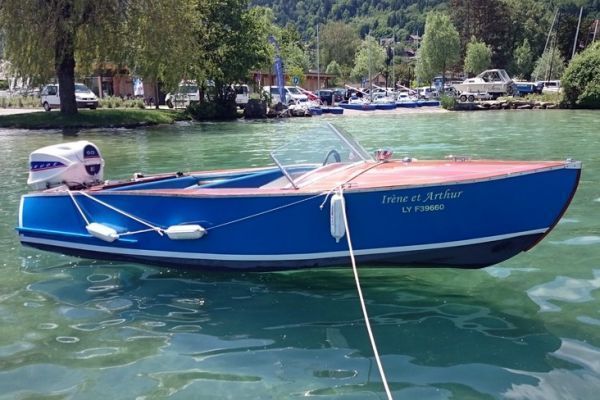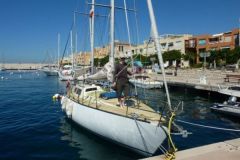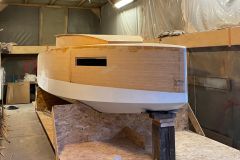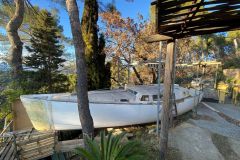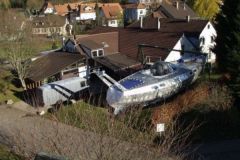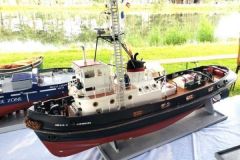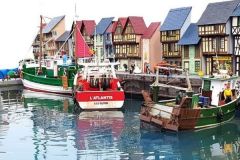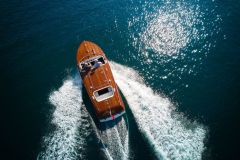Jeff doesn't know much about boats. But building one with his own hands doesn't scare him. So he found free plans on the Internet for a small 14-foot (4.30 m) runabout. And off he went.
Succinct plans
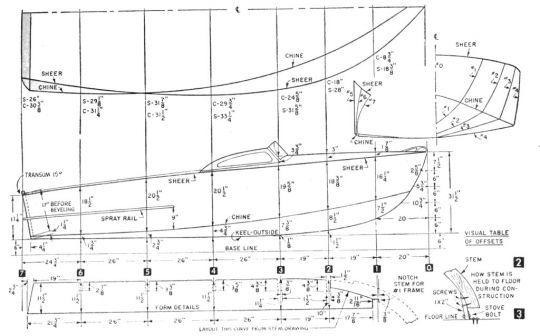
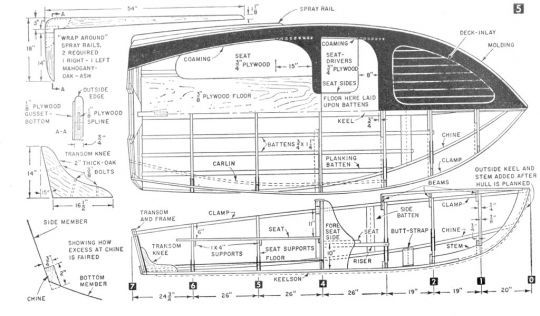
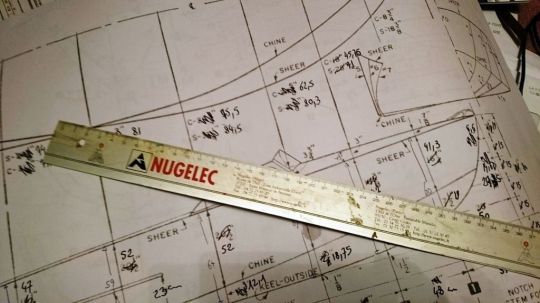
The plans date from the 60s, and come from an English magazine, with very brief instructions. The first challenge is to convert all the imperial data into metric. Next, Jeff had the plan printed in large format so that he could draw the couples. Despite the poor quality and inaccuracy of the plans, he transferred the angles by simply measuring them with a protractor. Final adjustments are made by eye.
Traditional construction
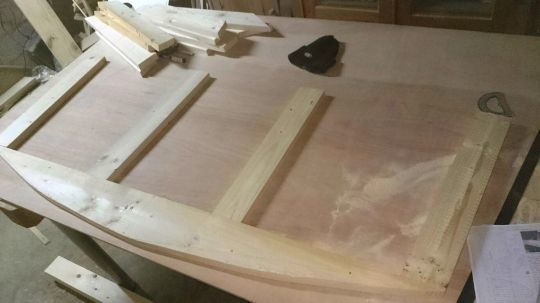
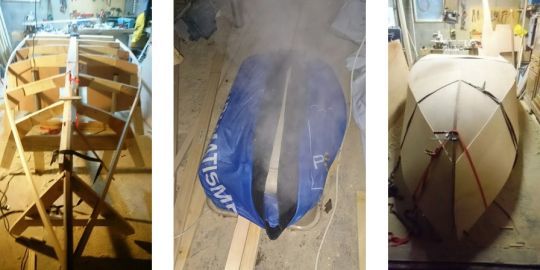
This little runabout is built upside down on a wooden frame. With little knowledge of boatbuilding, Jeff combined several assembly methods for his boat. The pine structure is glued with PU glue. The marine plywood planks are screwed together with stainless steel screws, but also glued with polyurethane adhesive. The whole assembly is then laminated with fiberglass roving and epoxy resin. Epoxy congealed joints complete the picture. A slightly heterogeneous assembly, but one that has the advantage of being solid.
Oven-bent
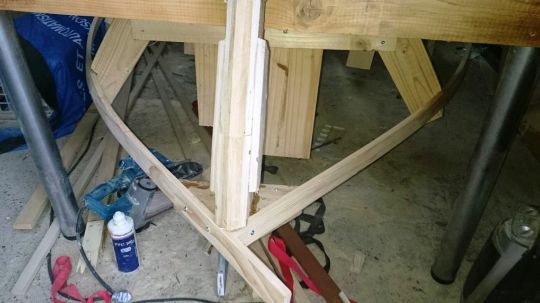
The shapes of this boat don't pose too many problems, except at the bow. This is where the gunwales have to be bent in 3 dimensions. After breaking off two of them, Jeff decides to steam them. Using an electric steamer that he encloses under a tarpaulin, he creates a steamer in which his planking remains for 45 minutes. Then he presents them on the boat, positioning them with presses and straps. By morning, the wood has taken shape and can be glued.
10 mm marine plywood edging
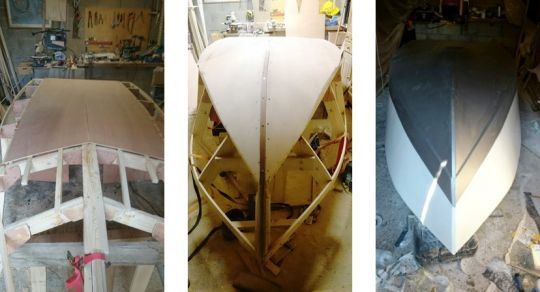
The hull is made of marine plywood. Jeff doesn't have a template, so he presents these 10 mm plates directly on the hull, traces the approximate cut-outs, and then adjusts them with a belt sander. The plates are then screwed in place with stainless steel screws. No fewer than 900 screws will be used for this boat! The hull is finally covered with a roving, epoxy laminate on the outside, which hides the screws. A coat of epoxy on the inside completes the hull.
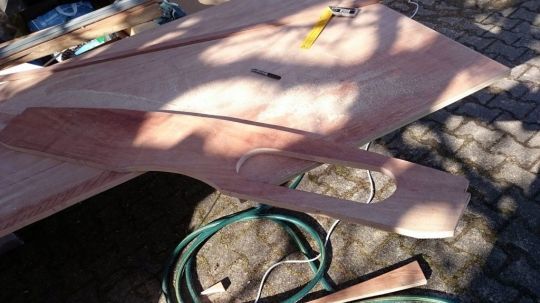
It's at the finishing stage that Jeff is going to pull his hair out, as sanding epoxy is a tricky business. He uses up a lot of sanding discs, but the result is not good enough for his taste.
Rapid construction in 5 months
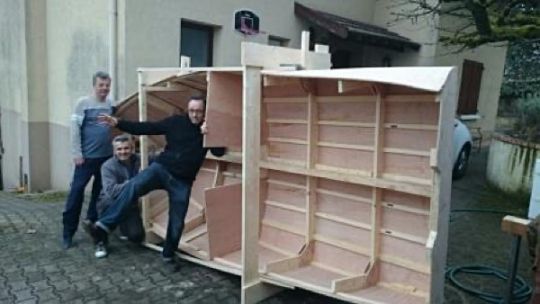
For this build, Jeff used his 6-meter-long garage. The boat was turned outside, with the help of 3 friends. Jeff works fast, very fast. The build took 5 months, working evenings and weekends. But he admits that during this period he never went to bed before 2am. In fact, his wife very kindly told him once the boat was finished: "I haven't taken much advantage of you in the last five months..."
A steering wheel and 4 seats
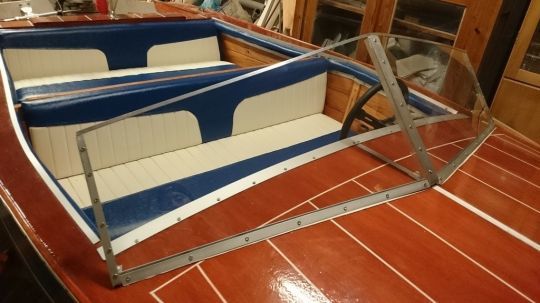
Jeff has made a few modifications to the layout. Originally, the boat was powered by a tiller outboard. Jeff decided to fit a steering wheel, with 4 seats facing the road. So he modified the bench seats and made the cushions himself, borrowing a neighbor's sewing machine.
A limited budget
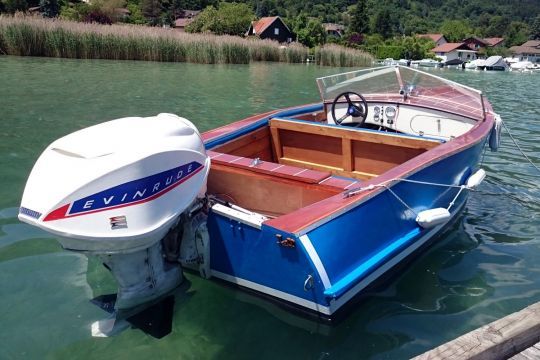
On the budget, the motorized boat cost ?4,000. For the motor, Jeff was looking for a retro-looking outboard to match the shape of his boat. For ?250, he found an Evinrude dating from 1968, with a 4-cylinder, 2-stroke, 60 hp engine. Stored under a tarpaulin, the engine was not blocked. With a friend, he rebuilt the electrical circuit, cleaned and greased it, and the engine was ready to go again!
No homologation problems
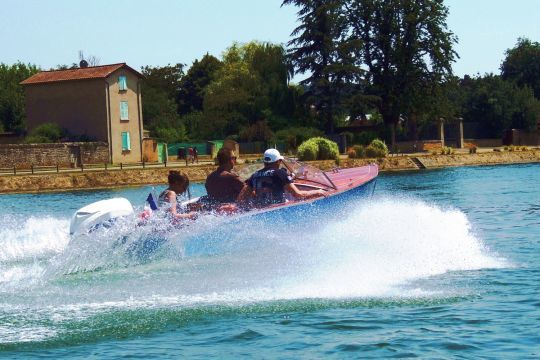
This engine has no trim, and the boat, with its 70-liter tank under the foredeck, is a bit wet. Jeff has added some fins to help with planing. Apart from the noise and fuel consumption, and the pollution, Jeff is very happy with his build. It can be sailed by a family of 4, even though the boat is approved for 6. Administratively, he had no problem getting his boat approved as an amateur build. All he had to do was put together a file, send in the plan, invoices for materials and photos of the construction. The only constraint was that he couldn't sell it for the first 5 years.
Sailing just for fun
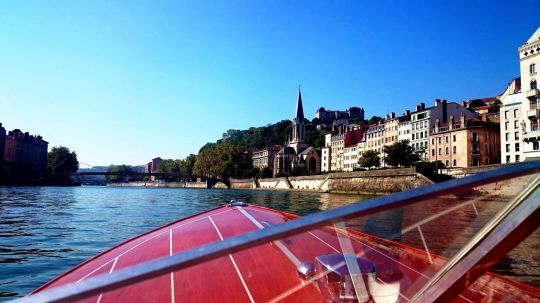
The boat now sails regularly on the Saône and a reservoir on the Loire. But already, other projects are taking shape for this amateur who is naturally gifted with his hands.
